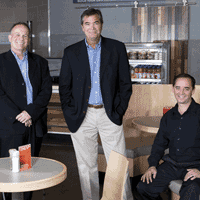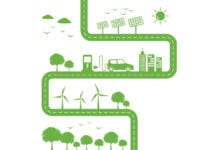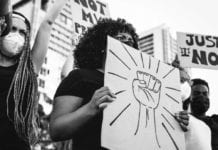South St. Burger Co. is pushing industry standards as it propels its green initiatives forward.
F&H: WHEN DID YOU MAKE THE DECISION TO SPOTLIGHT GREEN INITIATIVES, AND WHAT WAS THE IMPETUS FOR THIS DECISION?
JAY GOULD, PRESIDENT AND FOUNDER OF SOUTH ST. BURGER CO.: When we created the South St. Burger Co., concept, we knew our ingredients had to be “real, fresh and as local as possible” to align with our New York Fries brand. Immediately we went to a fresh, 100-per-cent pure beef patty, without any filler, preservatives, et cetera. Shortly after, we began buying beef raised naturally without the use of added hormones or antibiotics. Once we made the decision to buy the best ingredients, the same philosophy applied to purchasing our equipment and energy. We began researching buying “green” and quickly realized not only was it the right move for our brands, but the financial investment had a respectable ROI.
F&H: WHAT IS THE FOCUS OF YOUR GREEN PROGRAM — WHAT ARE YOU TRYING TO DO AND WHY?
GOULD: Our focus is to operate as sustainably as possible, and the best way we can have an impact is to research and invest in greener equipment. Our stores have implemented high efficiency grill hoods that recycle the heat generated by the grill and fryers — these hoods use the recaptured heat to preheat the incoming fresh air thereby off setting the restaurant’s heating requirements. We use an air-cooled ice maker instead of the traditional water cooled version; by making this switch, restaurants can eliminate 2,600 litres of water per day, which amounts to a savings of 950,000 litres per restaurant each year.We feel pretty good about that. And, we continue to find new equipment to invest in, including high-efficiency fryers, solar panels and Bullfrog Power; switching more lamps to LED saves us 4,400KwH annually and reduces carbon emissions by 1 tonne per store per year. Once you crunch the numbers, it almost becomes addictive, and we try to improve on our sustainability with each new store.
F&H: HOW MUCH MONEY HAS BEEN SPENT TO IMPLEMENT THIS PROGRAM, AND WHAT HAS BEEN THE BIGGEST CHALLENGE AND/OR BENEFIT?
GOULD: This varies, especially since our green initiatives replace a need for equipment we would be buying anyway. But I would guess we are paying a 25-per-cent premium, on average, for our equipment, fixtures and utilities to be green. This represents about $30,000 additional fixed costs per store, including an annual premium we pay to power our stores with Bullfrog Power.
F&H: RECENTLY, THERE’S BEEN ACCELERATED GROWTH OF GREENING, PROPELLED BY A MORE DISCERNING CUSTOMER BASE. WHERE DO YOU WANT TO GO IN THIS AREA, AND HOW LONG WILL IT TAKE TO GET THERE?
GOULD: Packaging is one area in which we would like to make more of an impact. Though we have made some inroads, we go through a lot of cups for our fries and drinks, especially with our New York Fries brand. Though we have been pushing suppliers to find greener options, it appears there is still not enough demand to source cups made from post-consumer recycled paper products, but we’ll keep pushing. We’re also keen on expanding our solar strategy. We’ve put solar-panel-assisted water heaters in at one location and solar-electrical panels in another. There are some challenges with this as well, but landlords are seeing the benefits now and are more open to working this into their building plans. Eventually, we would like to become LEED certified. We may already be close in some locations, but we haven’t applied for the certification yet. I’ll have to get on that.
F&H: HOW HAVE YOU WORKED WITH YOUR FRANCHISEES/ STAKEHOLDERS TO IMPLEMENT THESE INITIATIVES? HAS IT BEEN AS SMOOTH AS YOU ENVISIONED? HOW HAVE YOU DELIVERED A CONSISTENT MESSAGE TO THESE DIFFERENT GROUPS?
GOULD: A timely question. South St. Burger Co., is a corporately owned brand at this time, with the Calgary restaurant in Cross Iron Mills as the exception. Since the franchised location is in a mall, it doesn’t afford the same opportunities as our street-front location, but management still complies with whatever green practices possible. In fact, its beef source at Spring Creek Ranch is extremely local and has won awards for its sustainable initiatives. We are now at the point that we are ready to begin franchising our restaurants. Our commitment to green is front and centre in our franchise package. We are looking for candidates who believe in our brand values, including operating sustainably. I am hopeful we will find a common belief in this, but perhaps I should get back to you once we’ve put our franchising strategy into action.
F&H: WHAT IS THE MOST SIGNIFICANT INITIATIVE YOU’VE BEEN INVOLVED IN AND WHY?
GOULD: Choosing Bullfrog Power to supply green electricity to half of our stores. Though we do buy energy-efficient equipment in our stores at a premium price, we find cost savings in the energy savings of these units, so there is a ROI. But, with Bullfrog, there is no direct ROI to us; we pay more to use cleaner energy. This benefits our community as a whole. To my knowledge, no other QSR chain is using Bullfrog Power for their restaurants, making us unique in this category. We have recently moved into the “steward” level with Bullfrog, because we purchase more than 1,000 MWh of power through our seven participating stores.
F&H: WHAT IS THE MOST INNOVATIVE ASPECT OF YOUR PROGRAM? WHAT DID STAFF BUY INTO IMMEDIATELY?
GOULD: It’s definitely our hoods and return air systems. We were an early and significant customer to the technology and by committing to it, we helped a relatively small company grow and become a little more “mainstream.”What’s good for us is good for the industry and vice versa. Our next big project is to get more aggressive with solar, especially for heating water. We incorporated solar energy into two of our stores. Our Markham location has two racks of solar panels on its roof, and our Barrie location has a solar-power assisted hot-water tank. Although solar power is very topical and trendy now, it’s uncommon for restaurants in the QSR category to make this investment. Our staff is proud of our efforts and it shows. They’ve become more attuned to conserving as well. From cleaning with environmentally sensitive, non-toxic products to recycling our used oil —every day they’re involved in our process.
F&H: WHAT HAS BEEN THE ECONOMIC IMPACT AND COST SAVINGS ASSOCIATED WITH YOUR GREEN PRACTICES?
GOULD: Most of our energy-efficient equipment comes with a reasonable payback period and in time it will begin to save us money over conventional equipment, using today’s energy prices. When we evaluate the economic impact, we look at each piece of equipment individually. The cost of the Martin Air heat recovery system, for an exhaust fan and makeup air, is double that of a traditional unit. If we didn’t have this system, we would need traditional energy sources to reheat the air in the restaurant. The estimated annual savings is about $4,700 per year, based on 12 hours of daily operation and an energy cost of $0.50/m3 natural gas. This is a seven-year payback, which is a longer term than most other green initiatives, but it’s worth the initial cost. Our high-efficiency fryers cost 30 per cent more than a conventional fryer, and we have four fryers in each store. Each fryer uses 80 kBtu/hr compared to 110kBtu/hr. Depending on the cost of gas, there is an estimated annual savings of more than $1,100, giving us a payback in 60 months.
F&H: WHAT HAVE BEEN THE ENVIRONMENTAL RESULTS AND BENEFITS REALIZED?
GOULD: Each equipment system really comes with its own story. The grill hoods we employ have high technology heat-exchange ventilation systems so their heating requirements are reduced by more than 300 cubic metres of gas per month, with a carbon savings of 6.84 tonnes per year, per store. [By installing] an air-cooled versus water-cooled ice machine, we are achieving big water savings. Water-cooled units require about 518 litres of water to cool the compressor for every 100 lbs. of ice made. By contrast, air-cooled units rely on a fan with an incremental energy cost-per-year of about $200.We are saving almost one-million litres of water each year that would otherwise literally go down the drain. If we can continue to put fewer demands on conventional energy sources, such as coal-fired power generation, then our impact on the environment will be reduced.





















